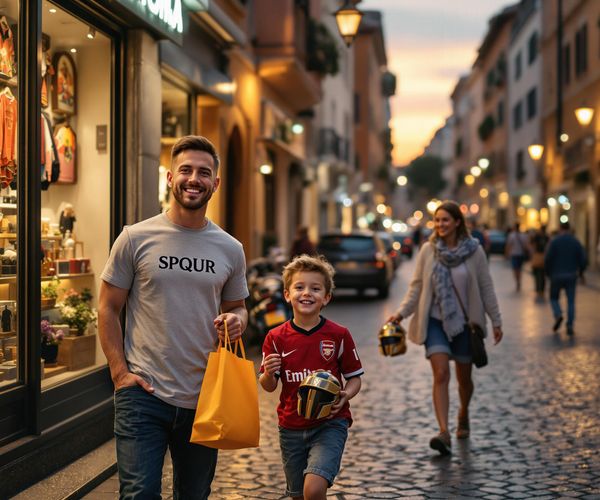
The Timeless Wonders of the Vatican Museums
Explore the Vatican Museums in Vatican City: A breathtaking collection of art, history, and culture, featuring masterpieces by Michelangelo, Raphael, and more.
The Vatican Museums, nestled in the heart of Vatican City, are a treasure trove of art, history, and culture. Established in the 16th century, these museums house an extensive collection of masterpieces amassed by the Roman Catholic Church over centuries. Visitors can marvel at breathtaking works by legendary artists such as Michelangelo, Raphael, and Caravaggio, as well as an array of ancient artifacts and religious relics. One of the most iconic highlights of the Vatican Museums is the Sistine Chapel. Adorned with Michelangelo's awe-inspiring frescoes, including the famous 'Creation of Adam,' the chapel is a must-see for any art lover. The Raphael Rooms, another major attraction, showcase the genius of Raphael through stunning frescoes that depict religious and philosophical themes. Apart from the renowned artworks, the Vatican Museums also offer unique experiences, like the Vatican Gardens and the Etruscan Museum. The gardens provide a serene escape with lush greenery and ornate fountains, while the Etruscan Museum highlights ancient history with fascinating artifacts from the Etruscan civilization. Whether you're an art aficionado, a history buff, or simply a curious traveler, the Vatican Museums promise an unforgettable journey through time and beauty.
Local tips in Vatican Museums
- Book tickets online in advance to skip the long lines.
- Visit early in the morning or late in the afternoon to avoid the busiest times.
- Wear comfortable shoes as the museums are vast and require a lot of walking.
- Take a guided tour to gain deeper insights into the artworks and their history.
- Don't miss the Vatican Gardens for a peaceful break from the crowds.
The Timeless Wonders of the Vatican Museums
The Vatican Museums, nestled in the heart of Vatican City, are a treasure trove of art, history, and culture. Established in the 16th century, these museums house an extensive collection of masterpieces amassed by the Roman Catholic Church over centuries. Visitors can marvel at breathtaking works by legendary artists such as Michelangelo, Raphael, and Caravaggio, as well as an array of ancient artifacts and religious relics. One of the most iconic highlights of the Vatican Museums is the Sistine Chapel. Adorned with Michelangelo's awe-inspiring frescoes, including the famous 'Creation of Adam,' the chapel is a must-see for any art lover. The Raphael Rooms, another major attraction, showcase the genius of Raphael through stunning frescoes that depict religious and philosophical themes. Apart from the renowned artworks, the Vatican Museums also offer unique experiences, like the Vatican Gardens and the Etruscan Museum. The gardens provide a serene escape with lush greenery and ornate fountains, while the Etruscan Museum highlights ancient history with fascinating artifacts from the Etruscan civilization. Whether you're an art aficionado, a history buff, or simply a curious traveler, the Vatican Museums promise an unforgettable journey through time and beauty.
When is the best time to go to Vatican Museums?
Iconic landmarks you can’t miss
St. Peter's Basilica
Experience the breathtaking beauty and spiritual significance of St. Peter's Basilica, a masterpiece of architecture and art in Vatican City.

Sistine Chapel
Explore the breathtaking artistry of the Sistine Chapel, a masterpiece of Renaissance art nestled in Vatican City, showcasing Michelangelo's iconic frescoes.
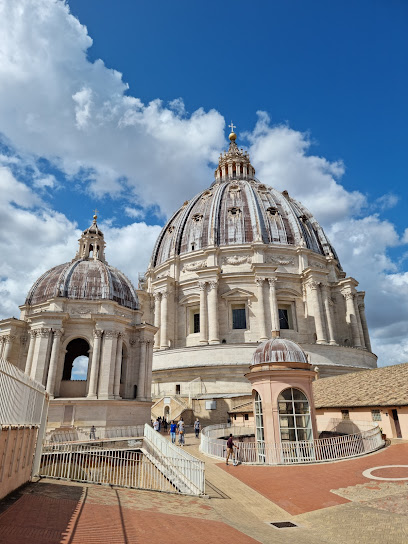
Saint Peter's Square
Explore the breathtaking Saint Peter's Square, a symbol of Vatican City's rich history and architectural beauty, perfect for reflection and admiration.
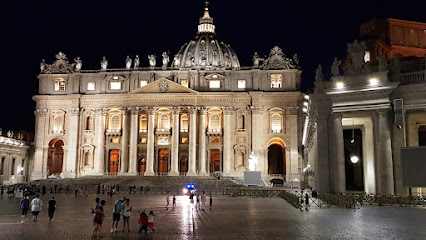
St. Peter Square Obelisk
Discover the grandeur of the St. Peter Square Obelisk, an iconic symbol of faith and history in the heart of Vatican City, surrounded by stunning architecture.
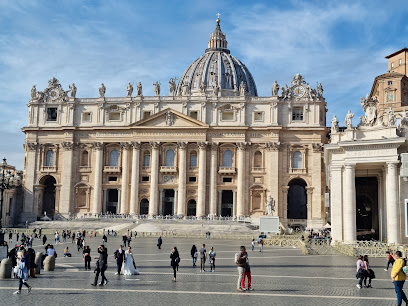
Gardens of Vatican City
Discover the serene beauty of the Gardens of Vatican City, an oasis of tranquility filled with lush greenery and stunning historical architecture.
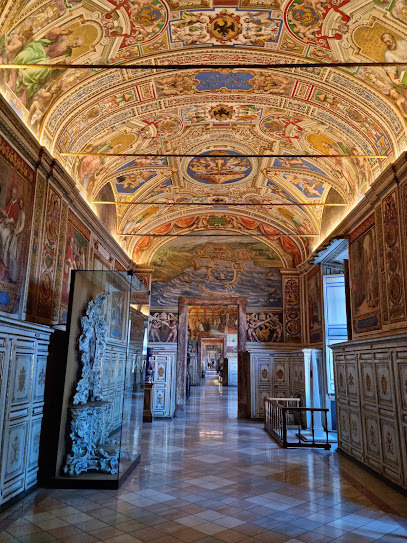
Apostolic Palace
Explore the Apostolic Palace, an iconic historical landmark in Vatican City, rich in art, culture, and the spiritual legacy of the papacy.
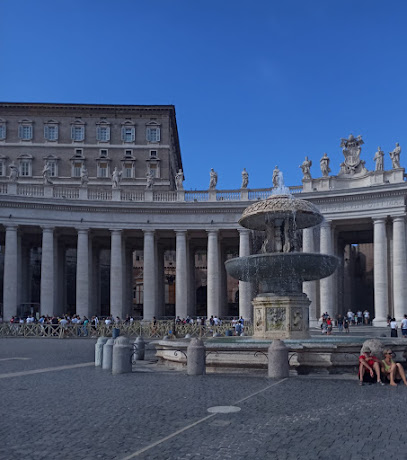
Vatican Necropolis
Discover the Vatican Necropolis, an ancient burial site beneath St. Peter's Basilica, revealing layers of early Christian history and artistry.
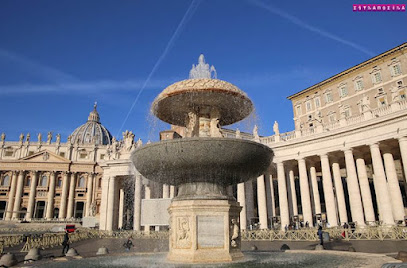
Pine Courtyard
Discover the Pine Courtyard in Vatican City, a serene garden blending nature and history, perfect for relaxation and contemplation.
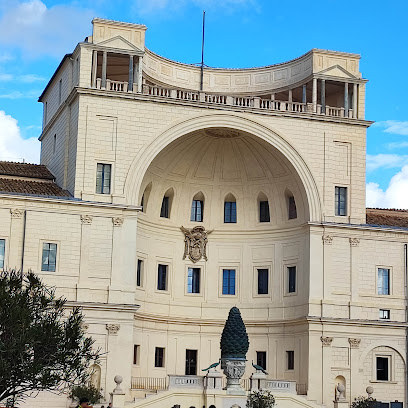
Crown Tours
Discover the magic of Rome with Crown Tours—expert-guided sightseeing tours that reveal the heart of the Eternal City.
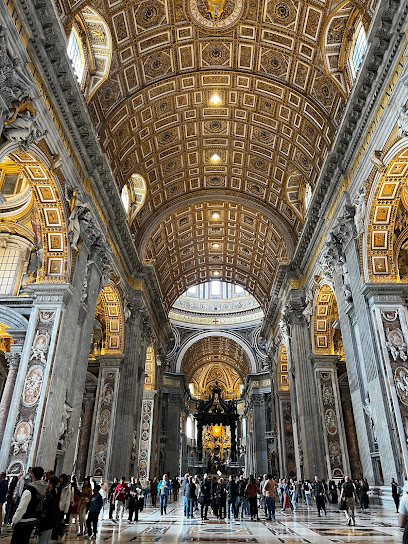
Touristation Vaticano
Discover the wonders of Vatican City with Touristation Vaticano, your premier sightseeing tour agency in Rome, where history and culture come alive.
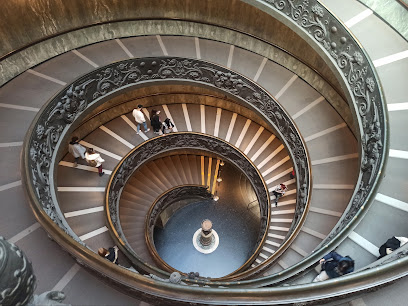
Bed & Breakfast Vatican Town
Experience the charm of Rome at Bed & Breakfast Vatican Town, your cozy retreat near the Vatican's iconic landmarks and rich culture.
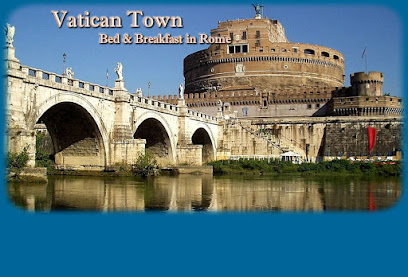
Paintings Gallery of the Vatican Museums
Explore the Paintings Gallery of the Vatican Museums, where Renaissance masterpieces and cultural history converge in a breathtaking artistic experience.
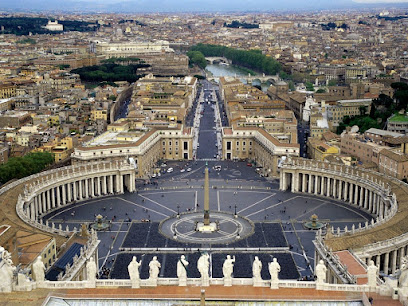
Bernini Fountain
Discover the breathtaking Bernini Fountain in Vatican City, a stunning masterpiece of Baroque art surrounded by the grandeur of St. Peter's Basilica.
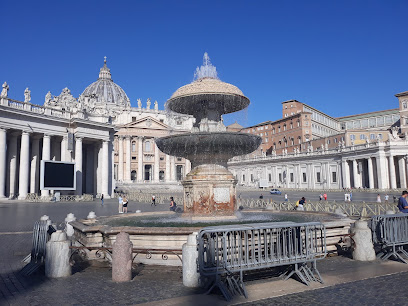
Excavation Office
Explore the ancient history beneath St. Peter's Basilica at the Excavation Office, a key tourist attraction in Vatican City.
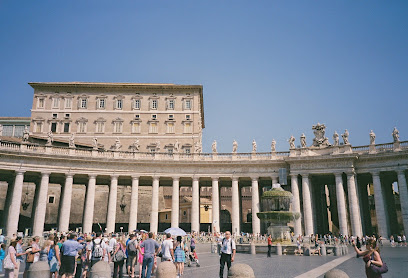
Parking Trionfale Market - Vatican Museums
Explore the Vatican Museums with ease by parking at Trionfale Market, your convenient hub for discovering Rome's rich history.
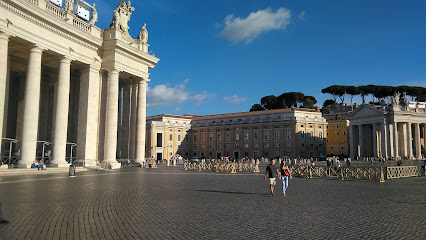
Unmissable attractions to see
Trevi Fountain
Discover the magic of the Trevi Fountain, a must-see baroque masterpiece in the heart of Rome, where legends of love and return come alive.
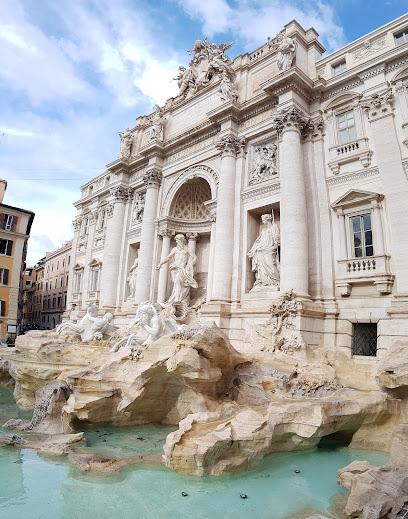
Colosseum
Explore the grandeur of Rome at the Colosseum, a timeless symbol of history and architectural brilliance, captivating millions of visitors each year.
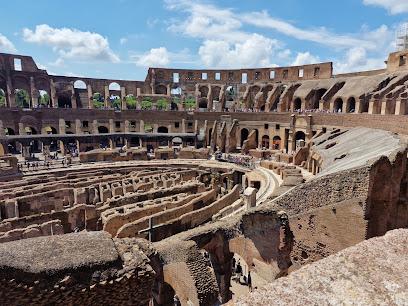
Pantheon
Discover the Pantheon in Rome, a breathtaking architectural marvel and historical landmark, blending ancient history with stunning artistry.
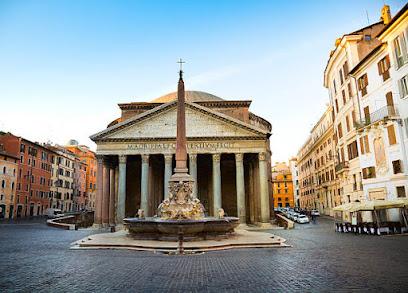
Piazza Navona
Experience the charm of Piazza Navona, Rome's iconic square filled with rich history, stunning fountains, and vibrant local culture.
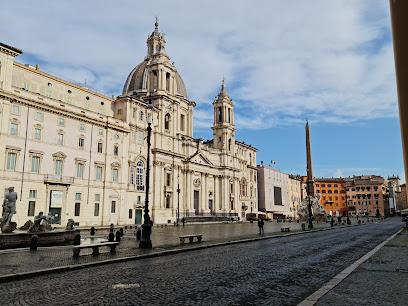
St. Peter's Basilica
Discover the magnificence of St. Peter's Basilica, a pinnacle of Renaissance architecture and a spiritual center in Vatican City.
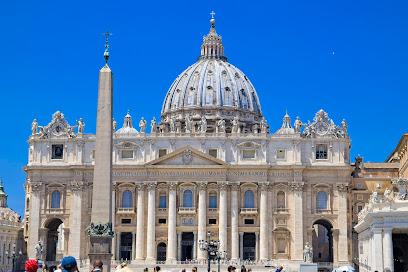
Roman Forum
Discover the Roman Forum, an open-air museum that reveals the grandeur of Ancient Rome through its fascinating ruins and historical significance.
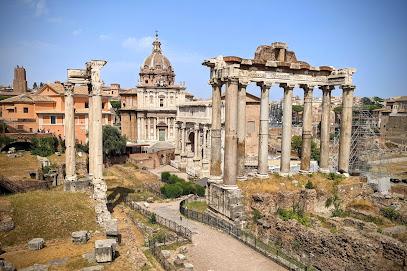
Castel Sant'Angelo
Explore Castel Sant'Angelo, a historic fortress in Rome that combines stunning architecture, rich history, and breathtaking views of the Eternal City.
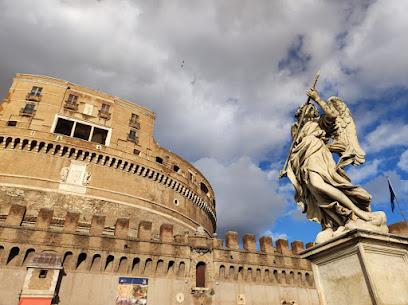
Sistine Chapel
Discover the breathtaking art and spiritual significance of the Sistine Chapel, a must-see historical landmark in Vatican City.
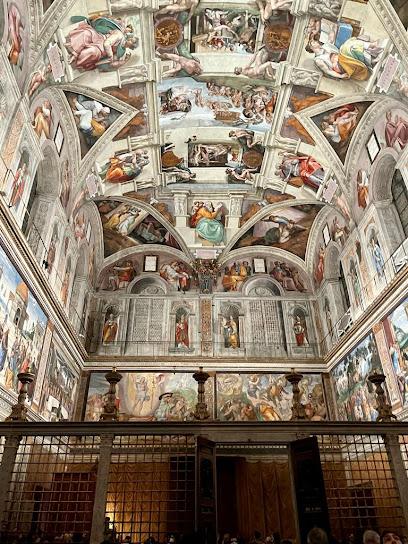
Villa Borghese
Discover the beauty and art of Villa Borghese, a serene park in Rome, rich in history and perfect for leisurely exploration and cultural experiences.

Piazza Venezia
Discover the historical splendor of Piazza Venezia, a key landmark in Rome, rich in culture and architectural beauty, perfect for an unforgettable visit.
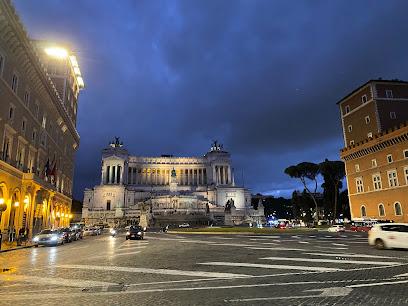
Circus Maximus
Discover the majestic Circus Maximus, Rome's ancient chariot racing arena, a historical marvel that echoes the grandeur of the Roman Empire.
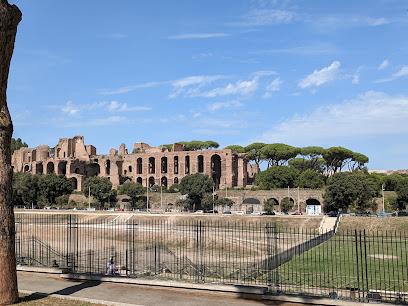
Papal Basilica of Saint Mary Major
Discover the splendor of the Papal Basilica of Saint Mary Major, a masterpiece of art and architecture in the heart of Rome.
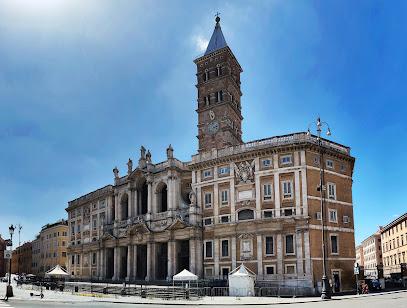
Largo di Torre Argentina
Explore the ancient ruins and intriguing history of Largo di Torre Argentina, a unique archaeological site in the heart of Rome, home to friendly felines.

Villa d'Este
Discover the breathtaking beauty of Villa d'Este in Tivoli, a UNESCO World Heritage site with stunning gardens and historic architecture.
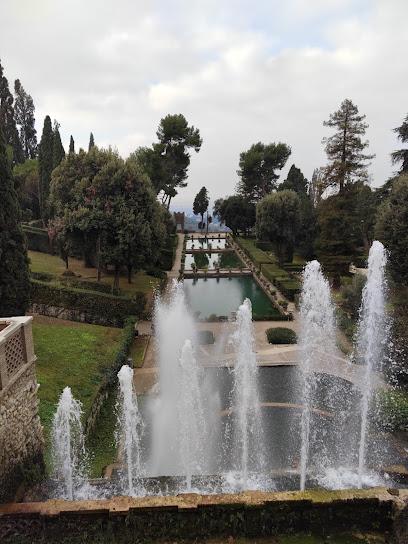
Stadio Olimpico
Discover Stadio Olimpico, Rome's premier stadium, where sports history and contemporary entertainment come together in a breathtaking setting.
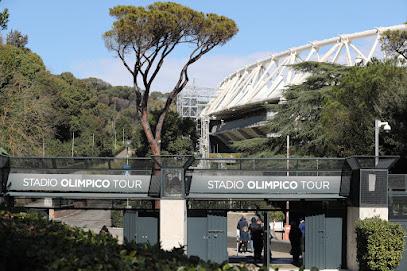
Essential places to dine
Ristorante Pizzeria Castello
Experience authentic Italian flavors at Ristorante Pizzeria Castello in Rome—home of exquisite pizzas and fresh seafood.
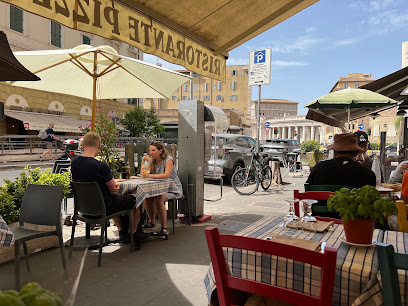
Pastasciutta
Experience authentic Italian flavors at Pastasciutta, Rome's beloved fast food destination for pasta lovers.
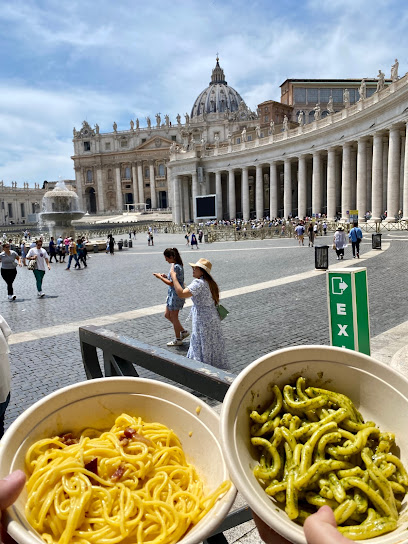
Ristorante dei Musei
Experience authentic Italian cuisine at Ristorante dei Musei in Rome—home to delicious pizzas and warm hospitality amidst historic charm.

Caffè Delle Commari
Discover Caffè Delle Commari: A charming restaurant in Rome offering exquisite coffee, delightful cocktails, and authentic Italian cuisine.
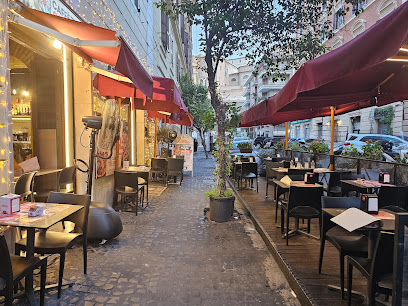
200 Gradi
Discover exquisite gourmet sandwiches at 200 Gradi in Rome - where quality meets flavor in every bite.
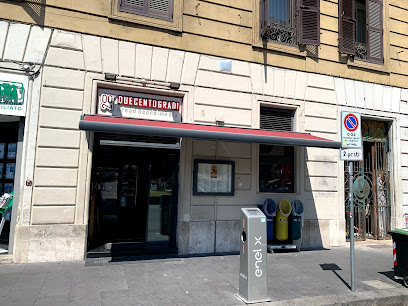
Pinsa 'mpò - pinseria romana a roma prati vaticano
Experience authentic Roman pinsa at Pinsa 'mpò - where tradition meets modern fast-casual dining in the heart of Rome.
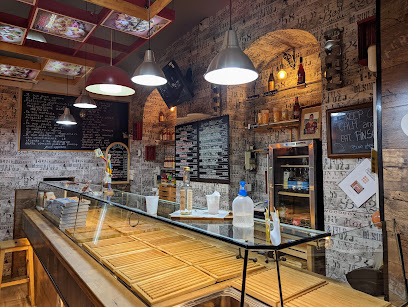
Hostaria Dino e Tony
Discover authentic Italian flavors at Hostaria Dino e Tony—where every meal tells a story steeped in tradition and taste.
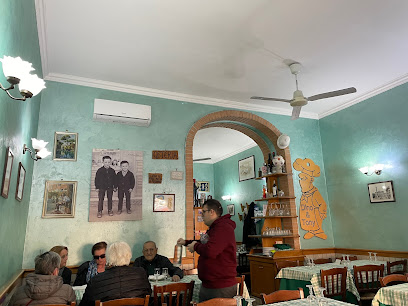
Ristorante Arlù
Experience authentic Italian cuisine at Ristorante Arlù in Rome's charming Borgo Pio district—where tradition meets flavor.
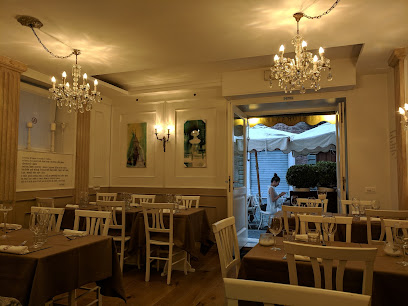
Satiricus Ristorante Pizzeria
Experience authentic Italian cuisine at Satiricus Ristorante Pizzeria - a must-visit dining destination in the heart of Rome.

Forno Feliziani
Savor authentic Italian pizza at Forno Feliziani - where tradition meets flavor in the heart of Rome.
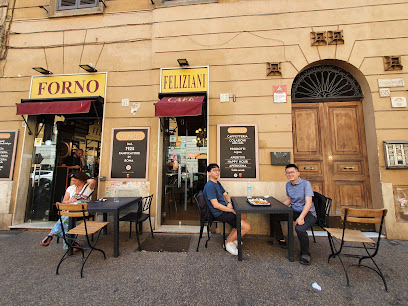
La Locanda di Pietro
Discover authentic Italian flavors at La Locanda di Pietro – where every dish tells a story in the heart of Rome.

Be.Re. + Trapizzino
Discover Be.Re. + Trapizzino: where traditional Italian flavors meet modern gastropub style in the heart of Rome.
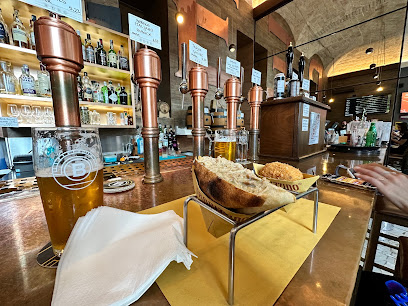
Spaghetti
Experience authentic Italian cuisine at Spaghetti in Rome - where tradition meets flavor in every delightful dish.
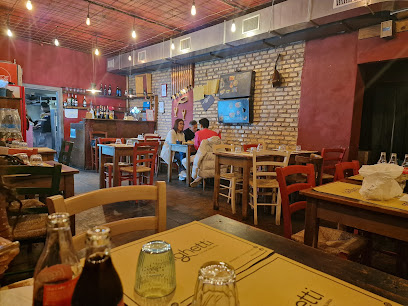
Ristorante Da Paolo
Discover Ristorante Da Paolo: where authentic Italian cuisine meets a cozy atmosphere in the heart of Rome.
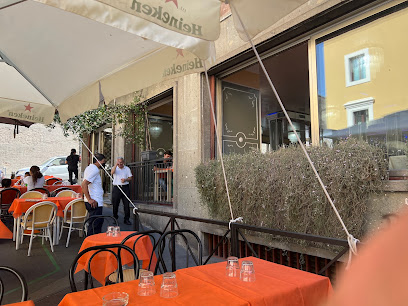
Scialla The Original Street Food
Experience authentic Roman street food at Scialla The Original Street Food - where delicious pizzas and local wines meet affordability.

Markets, malls and hidden boutiques
History and Magic
Explore the captivating world of collectibles and exquisite costume jewelry in Rome's enchanting shop, 'History and Magic'.
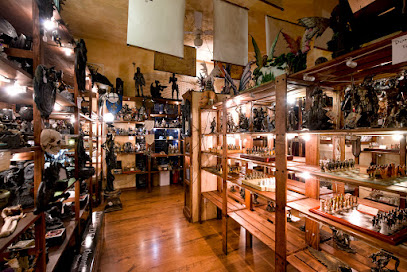
Foot Locker
Discover the latest sneaker trends and stylish footwear at Foot Locker in Rome, your go-to destination for fashion and comfort.

Vatican Pharmacy
Discover the Vatican Pharmacy, a historic destination for health products in the heart of Vatican City, blending tradition and wellness.
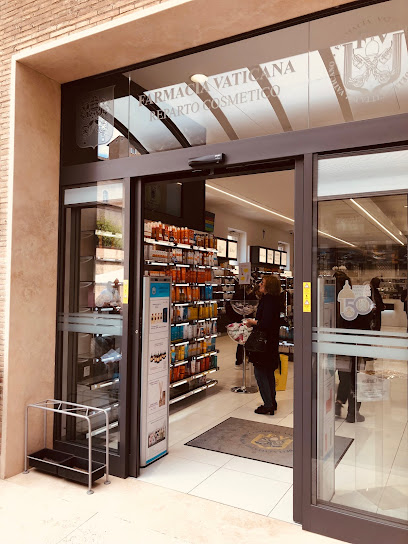
Annona Vatican City
Experience the authentic flavors of Vatican City at Annona, your go-to grocery store for fresh produce and Italian specialties.
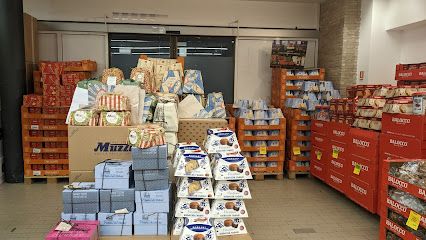
Bershka
Discover the latest fashion trends at Bershka in Rome, where stylish clothing and accessories await every fashion lover.
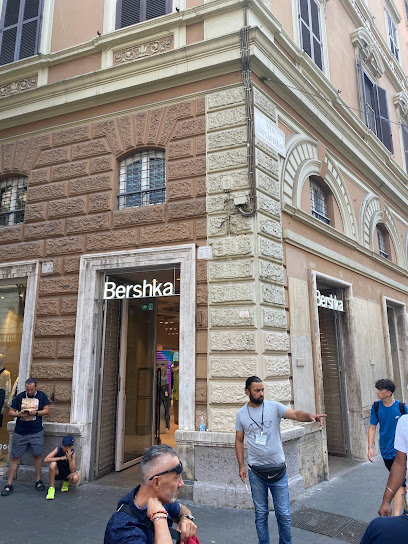
Savelli Religious (Savelli Art and Tradition)
Explore Savelli Religious in Rome for unique religious gifts and exquisite jewelry that capture the spirit of Italy's rich heritage.
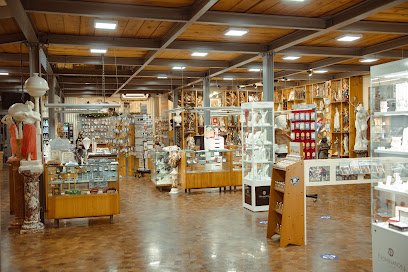
St. Peter's Gallery
Discover unique souvenirs and authentic Italian coffee at St. Peter's Gallery, a charming gift shop near the iconic St. Peter's Basilica in Rome.

Mondo Cattolico
Explore Mondo Cattolico in Vatican City for a unique selection of religious goods and souvenirs that capture the essence of your pilgrimage.

Vatican Emporium - Religious Articles & Gifts
Explore the Vatican Emporium, your go-to destination for unique religious gifts and articles in the heart of Rome's spiritual heritage.
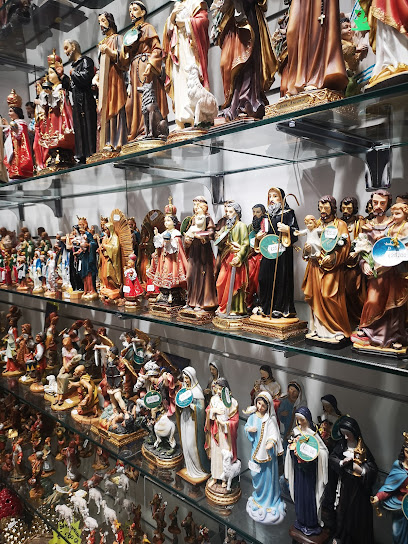
Domus Artis
Experience the essence of Rome at Domus Artis, where art, culture, and unique souvenirs come together to create an unforgettable journey.

Tourist Information Office
Explore Vatican City through its Tourist Information Office, offering souvenirs, books, and invaluable insights into the heart of Catholicism.
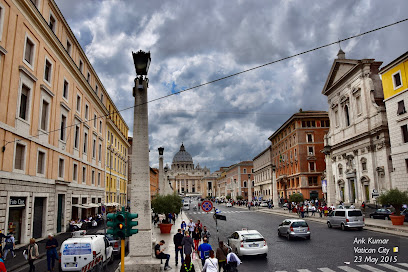
Emporio Vaticano
Discover Emporio Vaticano, your destination for exquisite religious artifacts and souvenirs in the heart of Rome, just steps from the Vatican.
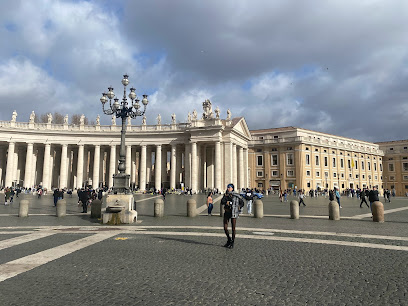
HUMILIS Made in Assisi (Boutique Roma Vaticano)
Discover the elegance of handcrafted jewelry at HUMILIS Made in Assisi, a unique boutique in the heart of Rome offering authentic Italian craftsmanship.

Vatican Souvenir & Mini Market
Discover authentic Roman keepsakes and local delicacies at Vatican Souvenir & Mini Market, your gateway to Italian culture and flavors.
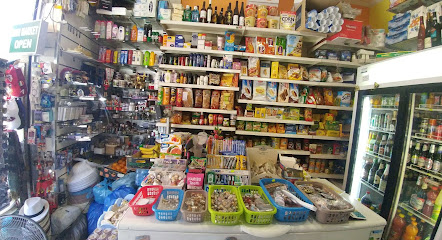
Angela Souvenirs roma
Discover unique souvenirs and clothing that capture the essence of Rome at Angela Souvenirs, a must-visit shop for every traveler.

Essential bars & hidden hideouts
Caffè Delle Commari
Experience the heart of Rome at Caffè Delle Commari, where exceptional coffee and delightful cuisine meet vibrant nightlife.
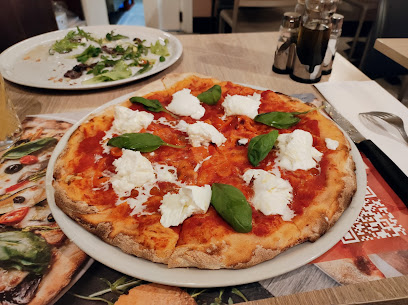
Be.Re. + Trapizzino
Experience the unique flavors of trapizzino at Be.Re. + Trapizzino, a vibrant gastropub in Rome offering craft beers and delicious street food.
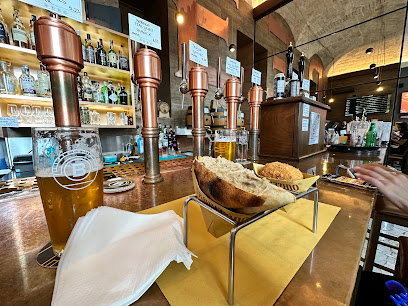
Wine Bar De' Penitenzieri
Discover the heart of Italian wine culture at Wine Bar De' Penitenzieri, where exquisite selections and a cozy atmosphere await in Rome.
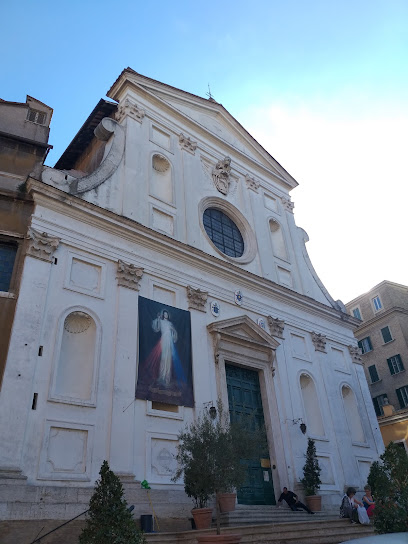
Caffè Vaticano
Experience authentic Italian espresso culture at Caffè Vaticano, a must-visit café near the Vatican, offering delightful drinks and a vibrant atmosphere.
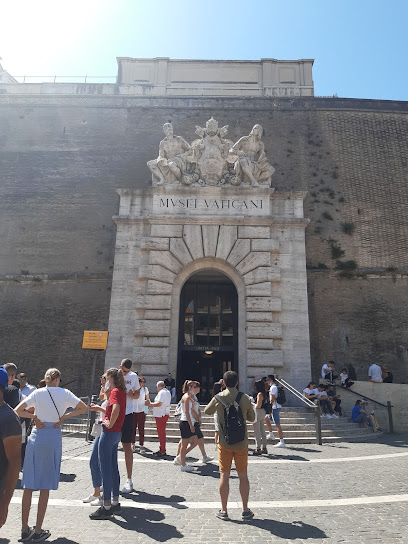
Bar L'Ottagona
Discover Bar L'Ottagona, a vibrant bar and restaurant in Rome offering a delightful mix of Italian cuisine and local drinks in a charming setting.
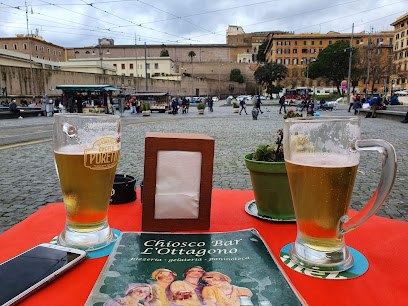
Bar Novecentotredici
Experience the vibrant café culture of Rome at Bar Novecentotredici, where exquisite espresso, delightful pastries, and refreshing cocktails await you.
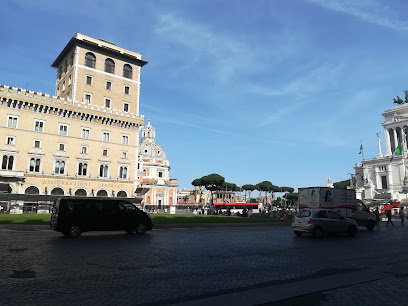
Cafe San Pietro
Discover the charm of Cafe San Pietro, where authentic Italian coffee meets breathtaking views of Rome's historic sites.
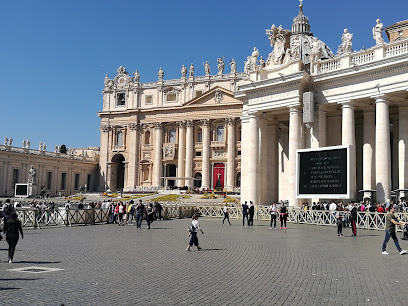
Saxophone Live Pub
Experience the vibrant energy of live jazz and an inviting atmosphere at Saxophone Live Pub in the heart of Rome.

Birreria Martini Esperienza Tedesca
Discover the authentic taste of Germany at Birreria Martini in Rome, with a vast selection of beers and traditional German cuisine.
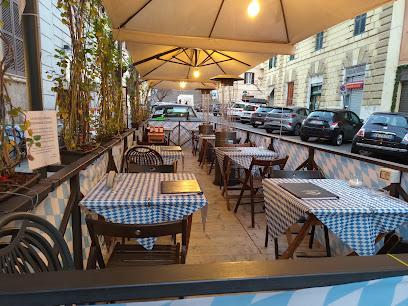
Giuly's Café
Discover the charm of Giuly's Café in Rome, where authentic Italian cuisine meets the vibrant atmosphere just steps from the Vatican.
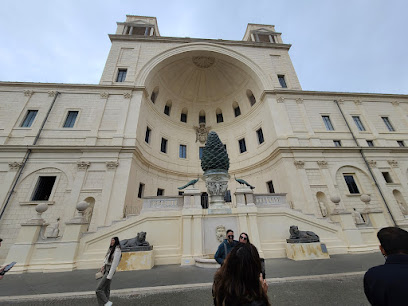
Derry Rock Pub
Discover Derry Rock Pub: Rome's lively Irish pub with delicious cocktails, live music, and an unforgettable atmosphere.

Caffè Leonina
Experience the heart of Rome at Caffè Leonina, where authentic Italian coffee meets a vibrant atmosphere in the city's historic core.
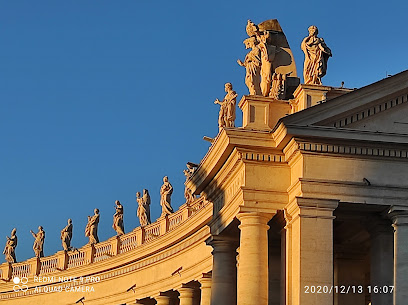
Bar Delle Grazie
Experience the essence of Rome at Bar Delle Grazie, where affordable drinks and a friendly atmosphere await in the heart of the city.
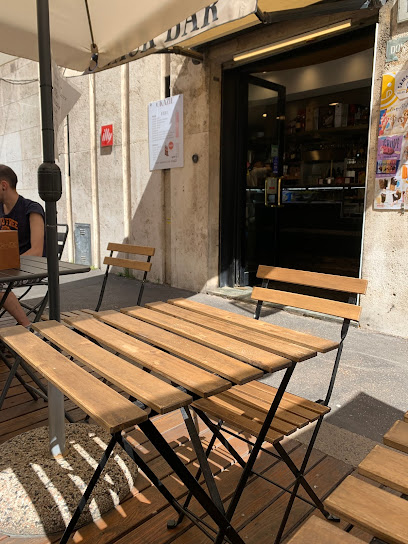
EXPRESSODRG
Discover the heart of Rome at EXPRESSODRG, where authentic Italian flavors meet a warm, welcoming atmosphere for every traveler.
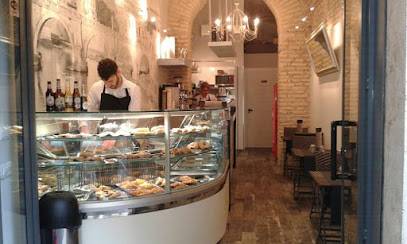
Bar Angeli
Experience the authentic flavors of Italy at Bar Angeli, a charming grill in the heart of Rome, perfect for any culinary adventure.
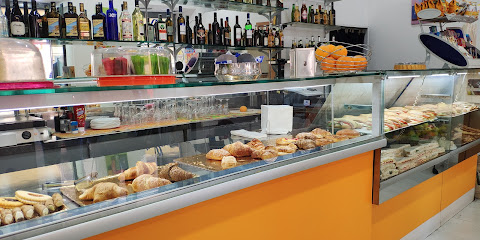
Travel experiences inspired by this city
Explore more travel diariesLocal Phrases
-
- HelloCiao
[chow] - GoodbyeArrivederci
[ar-ree-veh-dehr-chee] - YesSì
[see] - NoNo
[noh] - Please/You're welcomePer favore/Prego
[pehr fah-voh-reh/preh-goh] - Thank youGrazie
[grah-tsyeh] - Excuse me/SorryMi scusi/Scusa
[mee skoo-zee/skoo-sah] - How are you?Come stai?
[koh-meh stai] - Fine. And you?Bene. E tu?
[beh-neh. eh too] - Do you speak English?Parla inglese?
[pahr-lah een-gleh-zeh] - I don't understandNon capisco
[nohn kah-pee-skoh]
- HelloCiao
-
- I'd like to see the menu, pleaseVorrei vedere il menu, per favore
[vohr-ray veh-deh-reh eel meh-noo, pehr fah-voh-reh] - I don't eat meatNon mangio carne
[nohn mahn-joh kahr-neh] - Cheers!Salute!
[sah-loo-teh] - I would like to pay, pleaseVorrei pagare, per favore
[vohr-ray pah-gah-reh, pehr fah-voh-reh]
- I'd like to see the menu, pleaseVorrei vedere il menu, per favore
-
- Help!Aiuto!
[ah-yoo-toh] - Go away!Vai via!
[vah-ee vee-ah] - Call the Police!Chiama la polizia!
[kee-ah-mah lah poh-lee-tsyah] - Call a doctor!Chiama un dottore!
[kee-ah-mah oon doh-toh-reh] - I'm lostMi sono perso
[mee soh-no pehr-soh] - I'm illMi sento male
[mee sehn-toh mah-leh]
- Help!Aiuto!
-
- I'd like to buy...Vorrei comprare...
[vohr-ray kohm-prah-reh] - I'm just lookingSto solo guardando
[stoh soh-loh gwar-dahn-doh] - How much is it?Quanto costa?
[kwahn-toh koh-stah] - That's too expensiveÈ troppo caro
[eh troh-po kah-roh] - Can you lower the price?Può abbassare il prezzo?
[pwoh ab-bah-sah-reh eel preh-tsoh]
- I'd like to buy...Vorrei comprare...
-
- What time is it?Che ora è?
[keh ohr-ah eh] - It's one o'clockÈ l'una
[eh loo-nah] - Half past (10)Sono le dieci e mezza
[soh-no leh dyeh-chee eh meh-tzah] - MorningMattina
[mah-ttee-nah] - AfternoonPomeriggio
[poh-meh-ree-joh] - EveningSera
[seh-rah] - YesterdayIeri
[yeh-ree] - TodayOggi
[oh-jee] - TomorrowDomani
[doh-mah-nee] - 1Uno
[oo-noh] - 2Due
[doo-eh] - 3Tre
[treh] - 4Quattro
[kwah-troh] - 5Cinque
[cheen-kweh] - 6Sei
[say] - 7Sette
[seh-tteh] - 8Otto
[oh-ttoh] - 9Nove
[noh-veh] - 10Dieci
[dyeh-chee]
- What time is it?Che ora è?
-
- Where's a/the...?Dove si trova...?
[doh-veh see troh-vah] - What's the address?Qual è l'indirizzo?
[kwahl eh leen-dee-reet-tsoh] - Can you show me (on the map)?Puoi mostrarmi (sulla mappa)?
[pwoh-ee mohs-trar-mee (sool-lah mahp-pah)] - When's the next (bus)?Quando passa il prossimo (autobus)?
[kwahn-doh pah-ssah eel prohs-see-moh (ow-toh-boos)] - A ticket (to ....)Un biglietto (per ....)
[oon bee-lyet-toh (pehr)]
- Where's a/the...?Dove si trova...?
History of Vatican Museums
-
The Vatican Museums trace their origins back to 1506 when Pope Julius II established the first collection. The nucleus of the collection was the discovery of the Laocoön statue, an ancient Roman sculpture, which set the foundation for the extensive collections of art and artifacts that would follow.
-
Throughout the 16th and 17th centuries, successive popes expanded the collection, adding numerous works of art and antiquities. Notable contributions came from Pope Clement XIV and Pope Pius VI, who established the Pio-Clementine Museum in the late 1700s, specifically focusing on classical sculpture.
-
During the Renaissance and Baroque periods, the Vatican Museums benefited from the patronage of influential popes and the talents of renowned artists such as Michelangelo and Raphael. Michelangelo's Sistine Chapel ceiling and Raphael's Rooms (Stanze di Raffaello) are prime examples of this era's artistic achievements.
-
The 19th century saw significant growth in the museums' collections, particularly under Pope Gregory XVI, who founded the Etruscan Museum in 1837 and the Egyptian Museum in 1839. These new sections enriched the diversity of the collections, showcasing artifacts from ancient civilizations.
-
In the 20th century, the Vatican Museums underwent modernization and expansion to accommodate the increasing number of visitors and new acquisitions. Notable developments include the opening of the Vatican Pinacoteca in 1932, housing a vast collection of paintings, and the establishment of the Ethnological Museum in 1926.
-
One of the most significant events in the recent history of the Vatican Museums was the restoration of Michelangelo's Sistine Chapel frescoes, completed between 1980 and 1994. This meticulous project revealed the original vibrant colors and details of Michelangelo's masterpiece, attracting global attention.
-
The Vatican Museums have continued to evolve in the 21st century, embracing technology to enhance the visitor experience. Virtual tours, digital archives, and interactive exhibits have been introduced, making the vast collections more accessible to a global audience.
Vatican Museums Essentials
-
The Vatican Museums are located in Vatican City, which is situated within the city of Rome, Italy. The nearest international airport is Leonardo da Vinci–Fiumicino Airport (FCO), approximately 30 kilometers away. From the airport, you can take a taxi, which takes around 45 minutes. Alternatively, you can take a train to Rome Termini Station and then transfer to the metro (Line A) towards Battistini, getting off at the Ottaviano-San Pietro station. The Vatican Museums are a short walk from there.
-
Public transport is the most convenient way to get to the Vatican Museums. The Rome Metro Line A stops at Ottaviano-San Pietro and Cipro stations, both within a 10-minute walk from the museums. Buses 49, 32, 81, 982, and tram 19 also stop nearby. Taxis and ride-sharing services like Uber are widely available in Rome. If you prefer to drive, there are parking facilities near the Vatican, but be prepared for limited availability and high prices.
-
The official currency in Vatican City is the Euro (EUR). Credit cards are widely accepted in the Vatican Museums, including for ticket purchases and at gift shops. There are ATMs near the entrance to the museums. It is advisable to carry some cash for small purchases or if you plan to explore nearby local shops and cafes.
-
Vatican City and the surrounding areas in Rome are generally safe for tourists. However, pickpocketing can be an issue, especially in crowded places. Be vigilant with your personal belongings and avoid displaying valuables. The areas around Termini Station and some parts of Trastevere have higher crime rates targeting tourists, so exercise caution if you visit these neighborhoods.
-
In case of emergency, dial 112 for immediate assistance. The Vatican Museums have security personnel and first aid stations. The nearest hospital is Ospedale Santo Spirito in Sassia, located in Rome, about 1.5 kilometers from Vatican City. It is advisable to have travel insurance that covers medical emergencies. Pharmacies are available near the Vatican for minor health issues.
-
Fashion: Do dress modestly. Shoulders and knees should be covered to enter religious sites. Avoid wearing shorts, sleeveless tops, and revealing clothing. Religion: Do respect the religious significance of the Vatican. Speak softly and avoid disruptive behavior. Photography is restricted in certain areas, so observe posted signs. Public Transport: Do validate your metro or bus ticket before boarding. Don’t eat or drink on public transport. Greetings: Do greet people with a polite 'Buongiorno' (Good morning) or 'Buonasera' (Good evening). A simple nod or handshake is customary. Eating & Drinking: Do try local Italian cuisine. Don’t leave a tip on the table; instead, round up the bill or leave a small amount as tipping is not obligatory but appreciated.
-
To experience the Vatican Museums like a local, consider booking a guided tour, which often includes skip-the-line access. Early mornings and late afternoons are less crowded. Download the Vatican Museums' official app for an enhanced self-guided tour experience. Nearby, explore the local markets and small restaurants in the Borgo Pio area for authentic Roman cuisine and souvenirs. Don’t miss the chance to attend a Papal Audience on Wednesdays if the Pope is in residence.
Trending Landmark in Vatican Museums
-
St. Peter's Basilica
-
Sistine Chapel
-
Saint Peter's Square
-
St. Peter Square Obelisk
-
Gardens of Vatican City
-
Apostolic Palace
-
Vatican Necropolis
-
Pine Courtyard
-
Crown Tours
-
Touristation Vaticano
-
Bed & Breakfast Vatican Town
-
Paintings Gallery of the Vatican Museums
-
Bernini Fountain
-
Excavation Office
-
Parking Trionfale Market - Vatican Museums
Nearby Cities to Vatican Museums
-
Things To Do in Gregorian Etruscan Museum
-
Things To Do in Vatican Pinacoteca
-
Things To Do in Apostolic Palace
-
Things To Do in Sistine Chapel
-
Things To Do in Vatican Gardens
-
Things To Do in St. Peter's Basilica
-
Things To Do in St. Peter's Square
-
Things To Do in Vatican Necropolis
-
Things To Do in Rome
-
Things To Do in Orvieto
-
Things To Do in Assisi
-
Things To Do in Perugia
-
Things To Do in Montepulciano
-
Things To Do in Arezzo
-
Things To Do in Siena











